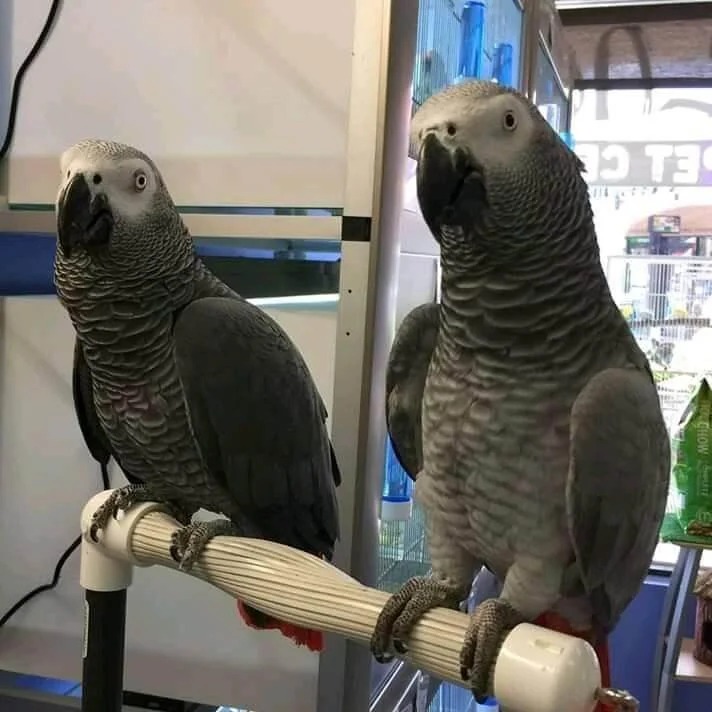The Blue African Grey Parrot: A Comprehensive Guide
The Blue african grey parrot adoption Grey Parrot, a flamboyant and intelligent species, is among nature's most fascinating avian marvels. Distinguished for its striking color, remarkable intelligence, and caring personality, this parrot has won the hearts of bird lovers around the world. This article looks into the various facets of the Blue African Grey Parrot, covering its characteristics, care requirements, and other important information for prospective owners.
1. Attributes of the Blue African Grey Parrot
The blue african grey parrot (Click To See More) is a sensational bird marked by its lively blue plumage, which contrasts considerably with its gray feathers. The parrot is known for its smart and lively nature, making it one of the most popular companion birds.
Physical Features
| Feature | Description |
|---|
| Size | Roughly 12 to 14 inches in length |
| Weight | Ranges in between 400 to 600 grams |
| Life expectancy | Can live for 30-50 years in captivity |
| Pigmentation | Mainly gray with striking blue accents on the wings and tail |
| Beak | Strong and curved beak |
Behavior and Temperament
- Smart: Blue African Grey Parrots are understood for their analytical skills and ability to imitate sounds and human speech.
- Social: These birds prosper on interaction and friendship and can become extremely connected to their owners.
- Spirited: They need stimulation and playtime to avoid boredom and establish healthy habits.
2. Environment and Diet
Creating an ideal environment and offering the ideal diet is crucial for the wellness of these exceptional birds.
Suitable Habitat
- Cage Size: A spacious cage with a minimum size of 24 inches broad, 24 inches deep, and 36 inches high is suggested.
- Environmental Enrichment: Provide toys, sets down, and chances for flying to keep their mind and body engaged.
- Temperature level: Maintain a comfy indoor temperature in between 65 ° F to 80 ° F(18 ° C
to 27 ° C). Diet Essentials A balanced
diet plan is important for the health of the Blue African Grey Parrot. Vital food products include:
- High-quality pellets
- Fresh fruits (e.g., apples, bananas, berries)
- Fresh veggies (e.g., carrots, leafy greens, bell peppers)
- Seeds and nuts in moderation
3. Health Considerations
The health of the Blue African Grey Parrot is critical. Regular veterinary check-ups are essential for early detection and avoidance of health problems.

Common Health Issues
- Breathing infections
- Plume plucking (often due to stress)
- Obesity due to improper diet
Signs of Illness
- Reduced cravings
- sleepiness
- Changes in feather condition
- Changes in droppings
4. Training a Blue African Grey Parrot
Training is important not only for behavioral management but likewise for reinforcing the bond between the parrot and its owner.
Tips for Effective Training
- Start Early: Early socializing and training cause better-behaved birds.
- Positive Reinforcement: Use treats and praise to motivate etiquette.
- Consistency is Key: Establish a routine with commands and training sessions.
Common Commands to Teach
- Step Up: A fundamental command for getting the bird to come to you.
- Come: Encourages the bird to return to its perch or handler.
- No: Important for dissuading undesirable behaviors.
5. Regularly Asked Questions (FAQs)
1. What is the life expectancy of a Blue African Grey Parrot?
A well-cared-for Blue African Grey can live between 30 to 50 years, making them a long-term commitment.

2. Do Blue African Grey Parrots require a lot of social interaction?
Yes, these parrots are social animals that grow on interaction. Daily engagement and companionship are essential for their wellness.
3. Can a Blue African Grey Parrot talk?
Absolutely! They are understood for their exceptional capabilities to simulate human speech and other sounds.
4. What are the indications that my Blue African Grey Parrot is dissatisfied?
Indications of a dissatisfied parrot consist of feather plucking, excessive shouting, aggressiveness, or withdrawal.
5. Is it needed to supply a varied diet plan?
Yes, a varied diet plan of pellets, fruits, and vegetables is crucial for their dietary requirements and total health.
The Blue Gizmo newborn african grey parrot Grey jako parrot for sale is a fascinating species that offers companionship, intelligence, and joy. However, they require dedication and accountable care to flourish. Understanding their environment, dietary needs, and social requirements allows potential owners to promote a healthy, happy life for these remarkable birds. With the right commitment and environment, a Blue African Grey can be a valued family member for years to come.